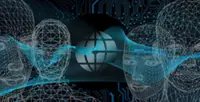Some districts have banned students from using AI at school. — Getty Images/The New York Times
AI remains an open mystery for many in academia with several school districts and colleges rushing to ban the use of ChatGPT in the classroom. While many of these bans have since been repealed, many schools are still hesitant about how AI tools will be used (or misused) in the classroom or laboratory.
But AI is inevitably going to be part of the workforce moving forward: The World Economic Forum predicts that by 2025, generative AI will create 97 million new jobs.
Where will all these people learn AI and get the training they need to succeed in this new economic environment?
The Georgia Institute of Technology has taken the opposite approach, welcoming the use of AI in study, essays, and other assignments – but with some guardrails. AI should be learned by engineers, even in disciplines and industries where AI regulations and restrictions are in place.
It’s up to educators to set students on the right path with AI. That cannot be accomplished by fearing it. We are not alone in this viewpoint, as schools like the University of Michigan, University of Colorado Boulder, and UC Irvine have all allowed AI and taken steps to provide AI tools for their students.
Embrace AI to move it forward
AI education is where computing education was 25 years ago when it became clear that computing skills are an integral part of curriculum across all levels and disciplines. AI is the next technology that every student needs to know a bit about to navigate our modern times.
Embracing AI is the best way to unlock its potential. AI is a tool. I see it as a black box, its mysteries ready to be unraveled so that both students and faculty can better understand how it works and what its limitations are.
By allowing students to use generative AI to solve problems and assist with assignments, we can show them what AI can and can’t do. They need to provide thorough explanations of how they used it and why. By providing this framework, students are more likely to understand that AI is a collaborator, not a replacement for their own intellectual work.
If we are to teach the next generation, we need to democratise access to heavy computing resources to deepen their understanding of AI skills. Our engineering students agree that access to this level of computing would allow them to meet the demands of the job market and research community. As such, we worked with the private sector to build the AI Makerspace, a supercomputer designed to teach students the skills they need to master and succeed in the new AI world. Tools like the AI Makerspace will help both students and faculty learn and train with the most up-to-date tech.
AI leaders are teaching and learning at the same time
Faculty of any discipline should prepare themselves to guide discussions around AI use and guardrails against misuse, so students understand both how to use AI and why they’re using AI.
Like with any technology, there needs to be clear, core rules with no gray areas. The dos (do review AI-generated content, do disclose its use) and don’ts (don’t enter protected or confidential data into AI tools) should be clearly defined on the university website, college sites, and in course materials given for any course that uses AI – which ultimately, could be any course.
One place to outline these AI rulings is in admissions. Georgia Tech clearly outlined its AI statement in the application process. We are sure to note that final ideas must be the student’s own and to treat AI as a collaborator to brainstorm, edit, and refine ideas.
This signals to incoming students how AI will be used at the university and nips AI cheating in the bud by outlining what won’t be accepted without putting a black label on all AI.
AI’s leaders and faculty are of course learning as they are teaching, and now is the time to collaboratively figure out AI’s potential, benefits, and pitfalls. It’s important to have a diverse faculty, so we have as many different microcosms of society as possible represented and to present a united front in how you’re going to use AI, with room for variation in how different fields use AI.
It’s important to note that foundational knowledge isn’t going to change. Basic math and science are fundamental knowledge bases, and making sense of data has always been a human task. Students will still need to learn the core of their chosen disciplines. AI won’t replace that.
But AI is here to stay, and it’s going to be an increasingly beneficial tool in almost every workplace. Those who know what it can do and what it cannot do will be poised to succeed, and we’re only going to be able to reach them if we embrace AI. – Fortune.com/The New York Times





